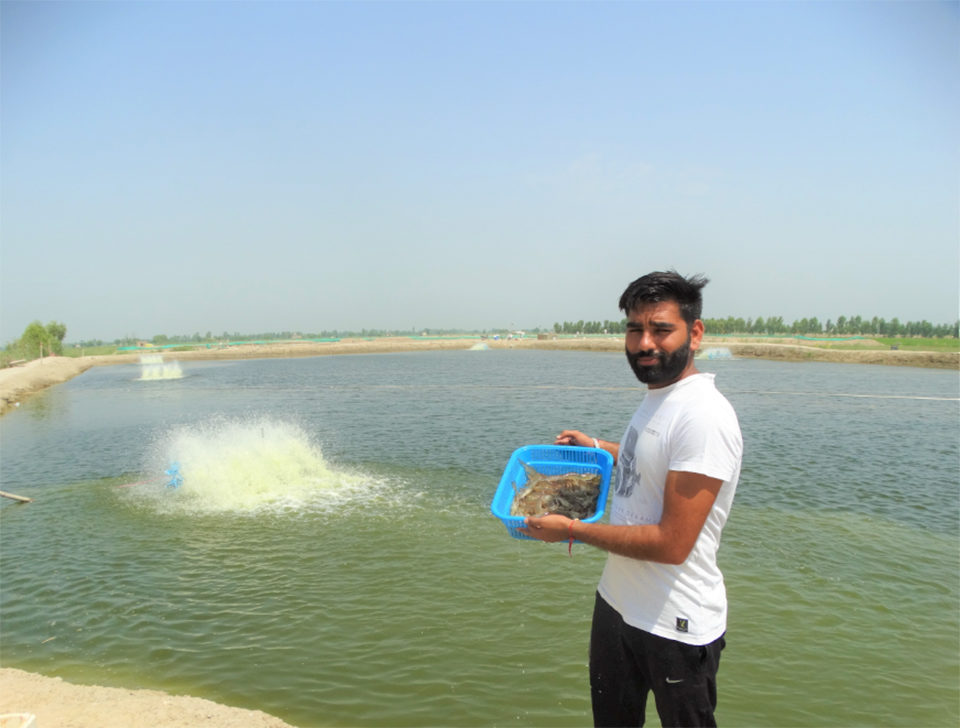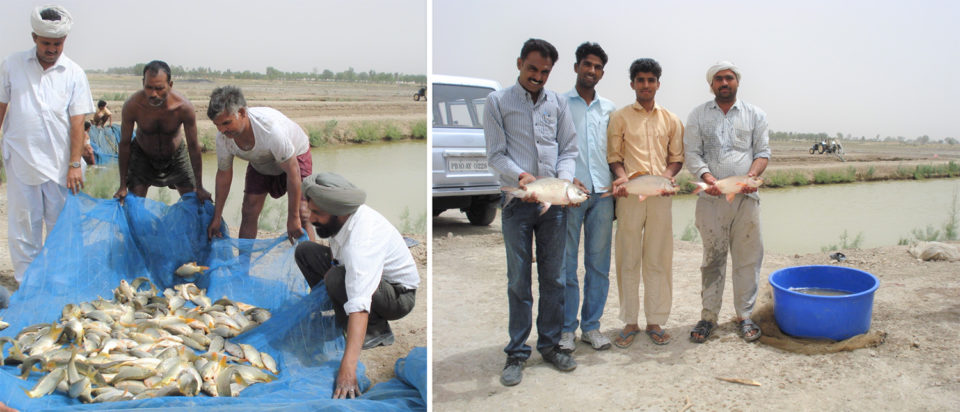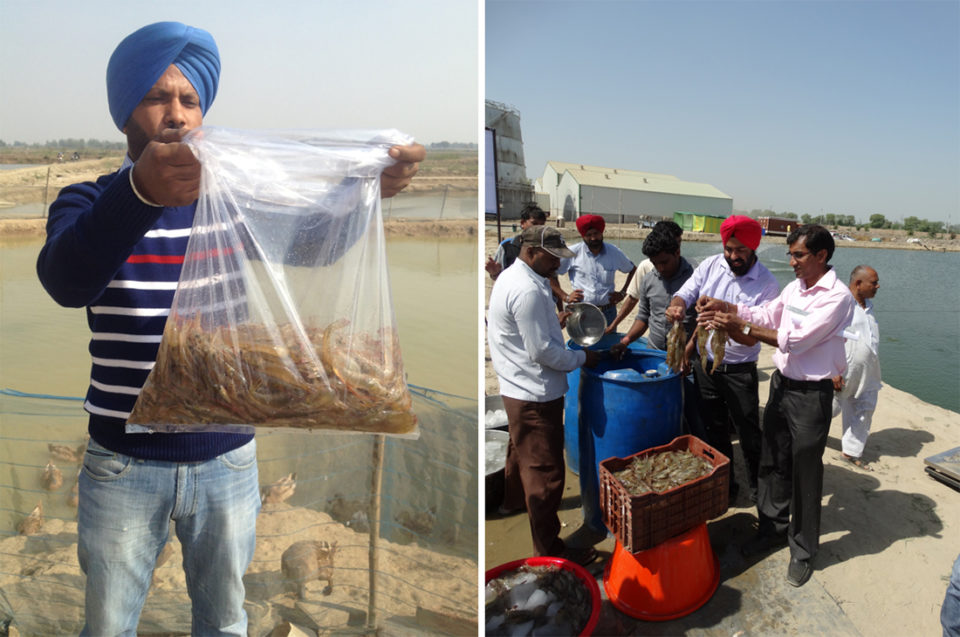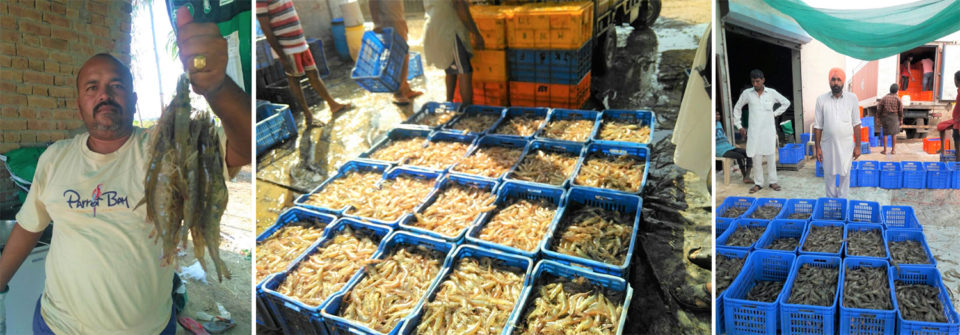Transforming adversity into prosperity

Soil salinization is a serious ecological threat affecting the agricultural output of more than 100 countries across the world, with varying degrees of negative impact on the socioeconomic welfare of their farming communities. The major inland saline lands of the world are found in arid, semi-arid and low-lying and poorly drained regions, where high concentrations of salts accumulate in the soil. This is known as primary salinization and is caused by insufficient rainfall and consequently poor leaching of soluble salts and/or restricted drainage due to geographical and topographical characteristics.
Anthropogenic activities have further deteriorated the soil salinization crisis, or secondary salinization, in areas with underground saline water. The intensive irrigation of agricultural lands with underground saline water, without the adequate provision of drainage (natural or man-made), has led to another serious problem –water-logging or the rise of the underground water table – and over the years has transformed fertile lands into non-productive wastelands. In fact, more than1,300 million hectares across the world have been documented to be affected by salt, which has impacted their agricultural output, and consequently the rural economies of many developing countries, including India.
Out of a total area of 6.74 million hectares that are affected by salt (including coastal saline soils) in India, about 1.20 million hectares (or 12 lakh ha) are located in the non-coastal Indo-Gangetic plains in northern India and covering seven states, including Punjab (151,000 ha; 1.51 lakh ha), Haryana (232,000 ha; 2.32 lakh ha), Rajasthan (375,000 ha; 3.75 lakh ha), Bihar (153,000 ha; 1.53 lakh ha), Uttar Pradesh (137,000 ha; 1.37 lakh ha), Madhya Pradesh (139,000 ha; 1.39 lakh ha) and Jammu and Kashmir (17,000 ha; 0.17 lakh ha).

Inland saline aquaculture thriving in Punjab
The agriculture economies of six southwest districts of Punjab State (Fazilka, Ferozepur, Sri Mukatsar Sahib, Bathinda, Faridkot and Mansa) are being affected by the dual problems of underground water salinity and water-logging. These inland, salt affected and waterlogged areas – where agriculture does not have a prominent role but water is abundantly available – can be potentially utilized for developing aquaculture. Thanks to research and development initiatives from 2007 to 2018 by Guru Angad Dev Veterinary & Animal Sciences University (GADVASU) in Ludhiana (Punjab, India) under various projects – including the Niche Area Excellence Program during 2010 to 2015, funded by the Indian Council of Agricultural Research (ICAR), New Delhi (India) – inland saline water aquaculture has flourished in the State of Punjab.
The first pilot project with freshwater carp culture in an inland saline area was carried out from 2007 to 2010 in unproductive land of farmer Mr. Radhey Sham, in the village of Shajrana (Fazilka District), under the leadership of Dr. Asha Dhawan (former Dean, College of Fisheries, GADVASU) and with collaboration from the local industrialist Mr. Sanjeev Nagpal (NGO), which proved to be the torch bearer for other farmers of the region. Subsequently, the aquaculture area in the village increased from 1 hectare in 2014 to more than 30 ha in 2018, with an average annual earnings of US$2,152 per ha (INR 150,000 per ha) in low saline areas (≤ 5ppt). This aquaculture development has transformed the socioeconomic status of this farming community, otherwise forced to work as daily wagers or farm laborers.

Subsequently, after a preliminary farm trial in 2013, the first pilot project farming Pacific white shrimp (Litopenaeus vannamei) started in Fazilka in 2014, which developed these wastelands into a potential economic resource and attracted the attention of the state government. This led to the start-up of financial assistance to poor farmers of the region to adopt aquaculture and reclaim their lands for employment and a dependable livelihood.

With continuous technical support from GADVASU from 2007 to 2018 and the promotional activities of the state government from 2016 to 2018 implemented by the Fisheries Department of the State, about 250 ha of salt-affected, waterlogged lands in the southwest district have been converted into aquafarms during the last five years, including freshwater carp culture in low-saline (≤ 5ppt) areas and L. vannamei culture in medium- to high-saline areas (10 to 25 ppt). In 2017, shrimp farming was carried out in 15 ha of salt-affected areas of Punjab, which increased to 92 ha in four districts (Fazilka, Sri Muktsar Sahib, Mansa and Bathinda) during 2018, and is expected to increase further to over 200 ha in 2019.
With productivity ranging between from 8 to 10 tons per ha per crop (cycles of 4 months) and a corresponding net profit of US$14,345 to $17,216 (INR 1-1.2 million), shrimp farming has converted wastelands into gold mines, especially for large farmers with relatively stronger economic backgrounds and higher investment and risk taking capacity. The winter season (Nov-Dec to Feb-Mar) in the non-coastal northern states restricts the culture of shrimp to seven to eight months, but still two crops of shrimp can be produced and harvested in Punjab, between April to November (before the onset of winter), making it highly remunerative as compared to any other agriculture and livestock enterprise.
In the case of small farmers, for shrimp farms once established with one-time financial assistance from state/central government, the income from a single crop is sufficient to generate a revolving fund for the subsequent crop, thus transforming them into larger and progressive farmers with every crop they harvest. Hence, Punjab’s hardworking, innovative and enthusiastic farmers are looking forward to a brighter future, provided existing issues are addressed through an effective R&D action plan at the national level for optimized aquaculture utilization of salt affected lands to support their food and livelihood security.

Major concerns, future road map
There are a number of concerns for further development of this emerging shrimp farming industry. One of the major issues is that the culture of L. vannamei is a “high-cost, high-risk” intensive production technology, requiring highly skilled manpower and stringent monitoring with high levels of biosecurity.
Also, for developing shrimp farming in non-coastal states, specific pathogen free (SPF) seedstock must be transported by air from registered hatcheries in far-off coastal states. And there are no shrimp feed manufacturing nor processing industries in the non-coastal states. Finally, unlike typical seawater, the salinity and chemical composition of inland saline waters vary with location, even within the same district.
Regarding a road map for the future, the industry needs an ecological mapping of salt affected areas (including salinity, composition) for development of region-specific aquaculture practices. Also, the need for introduction of low-cost, low-risk species for sustainable development of inland saline water aquaculture, with special reference to small and poorer farmers. And the establishment of a National Aquaculture Network and Public Private Partnerships (PPP) to ensure the supply of inputs like seed, feed and others, and support for marketing, processing and exports to non-coastal states. Finally, also needed is the development of production skills and shrimp farming clusters, promoting support groups, cooperatives and contractual farming under strict biosecurity monitoring and regulatory governance.
Authors are very thankful to ICAR, New Delhi (India), ICAR-CIFE Center (Haryana), Director & Warden Fisheries (Punjab) and the State Government of Punjab for their support and collaboration in transforming salt-affected wastelands into a potential economic resource.
Also, the visionary initiative, motivation and paramount guidance provided by Dr. Asha Dhawan – former dean, College of Fisheries (GADVASU) – and the Vice Chancellors (2007 to 2019) of GADVASU, Dr. V.K. Taneja and Dr. A.S. Nanda have been the real driving force behind this success story and their contribution is duly acknowledged.
Now that you've finished reading the article ...
… we hope you’ll consider supporting our mission to document the evolution of the global aquaculture industry and share our vast network of contributors’ expansive knowledge every week.
By becoming a Global Seafood Alliance member, you’re ensuring that all of the pre-competitive work we do through member benefits, resources and events can continue. Individual membership costs just $50 a year. GSA individual and corporate members receive complimentary access to a series of GOAL virtual events beginning in April. Join now.
Not a GSA member? Join us.
Authors
-
Dr. Meera D. Ansal
Senior Scientist (Fisheries)
Department of Aquaculture
College of Fisheries
Guru Angad Dev Veterinary & Animal Sciences University (GADVASU)
Ludhiana (Punjab) - 141004, India[109,111,99,46,108,105,97,109,103,64,100,109,108,97,115,110,97]
-
Dr. Prabjeet Singh
Assistant Professor (Fisheries)
Department of Fisheries Resource Management
College of Fisheries, GADVASU
Ludhiana (Punjab) - 141004, India
Related Posts

Aquafeeds
A look at India’s fish feed industry
India's fish-farming industry makes limited use of modern feeds, providing potential for the feed sector to grow. Commercial feeds are predominantly used for pangasius farming, followed by a rising popularity in carp culture.

Health & Welfare
A study of Zoea-2 Syndrome in hatcheries in India, part 1
Indian shrimp hatcheries have experienced larval mortality in the zoea-2 stage, with molt deterioration and resulting in heavy mortality. Authors investigated the problem holistically.

Health & Welfare
Big shoes to fill: Dhar takes reins at shrimp pathology laboratory
Arun Dhar, Ph.D. will attempt to fill the “big shoes” of Dr. Donald Lightner at the University of Arizona’s Aquaculture Pathology Laboratory, where the shrimp disease EMS was diagnosed.

Innovation & Investment
AI platform delivers data to fish and shrimp farmers
XpertSea does more than count fish. It uses AI and computer vision to calculate growth rates and optimal harvest dates to improve aquaculture efficiency.


